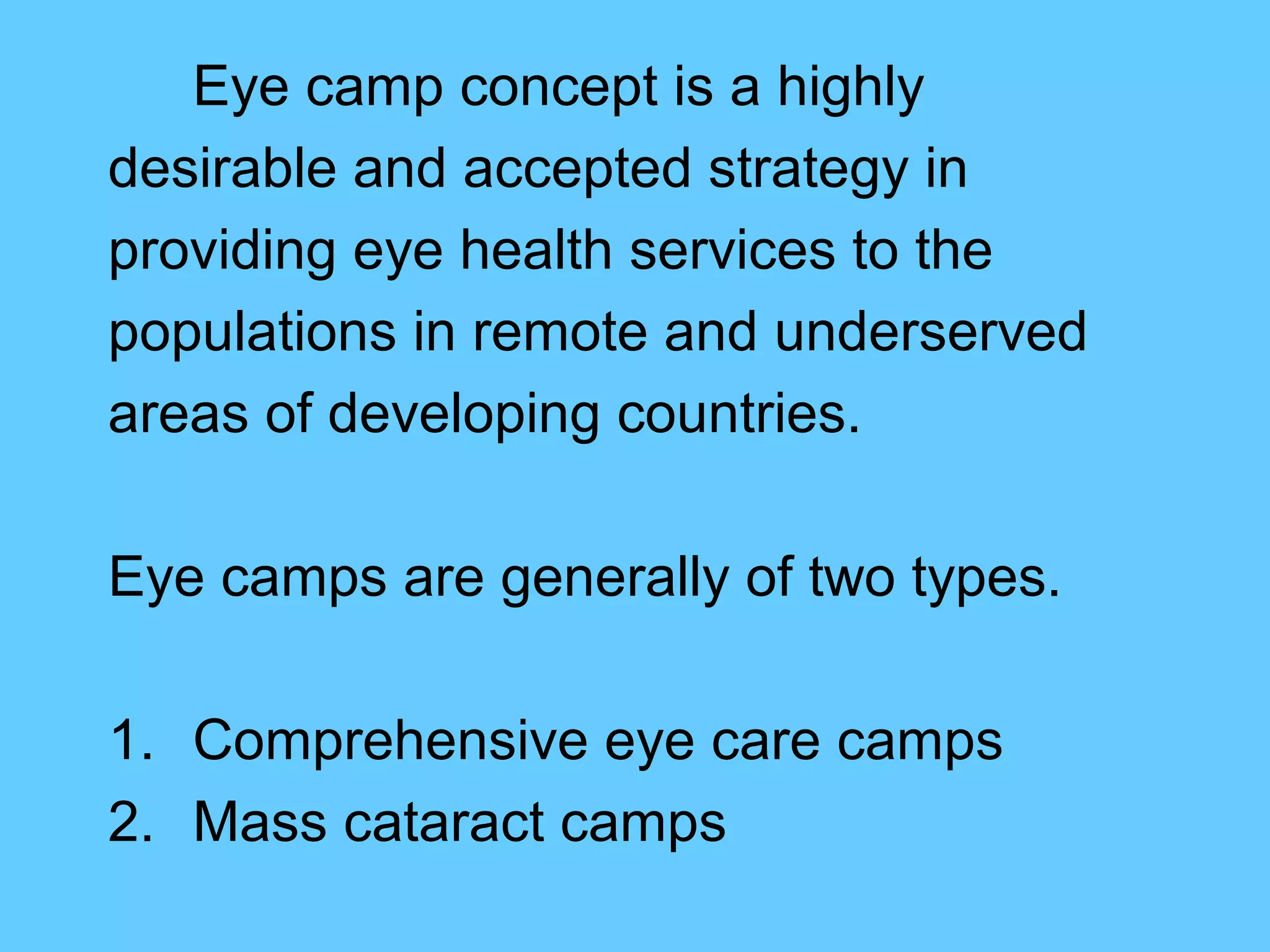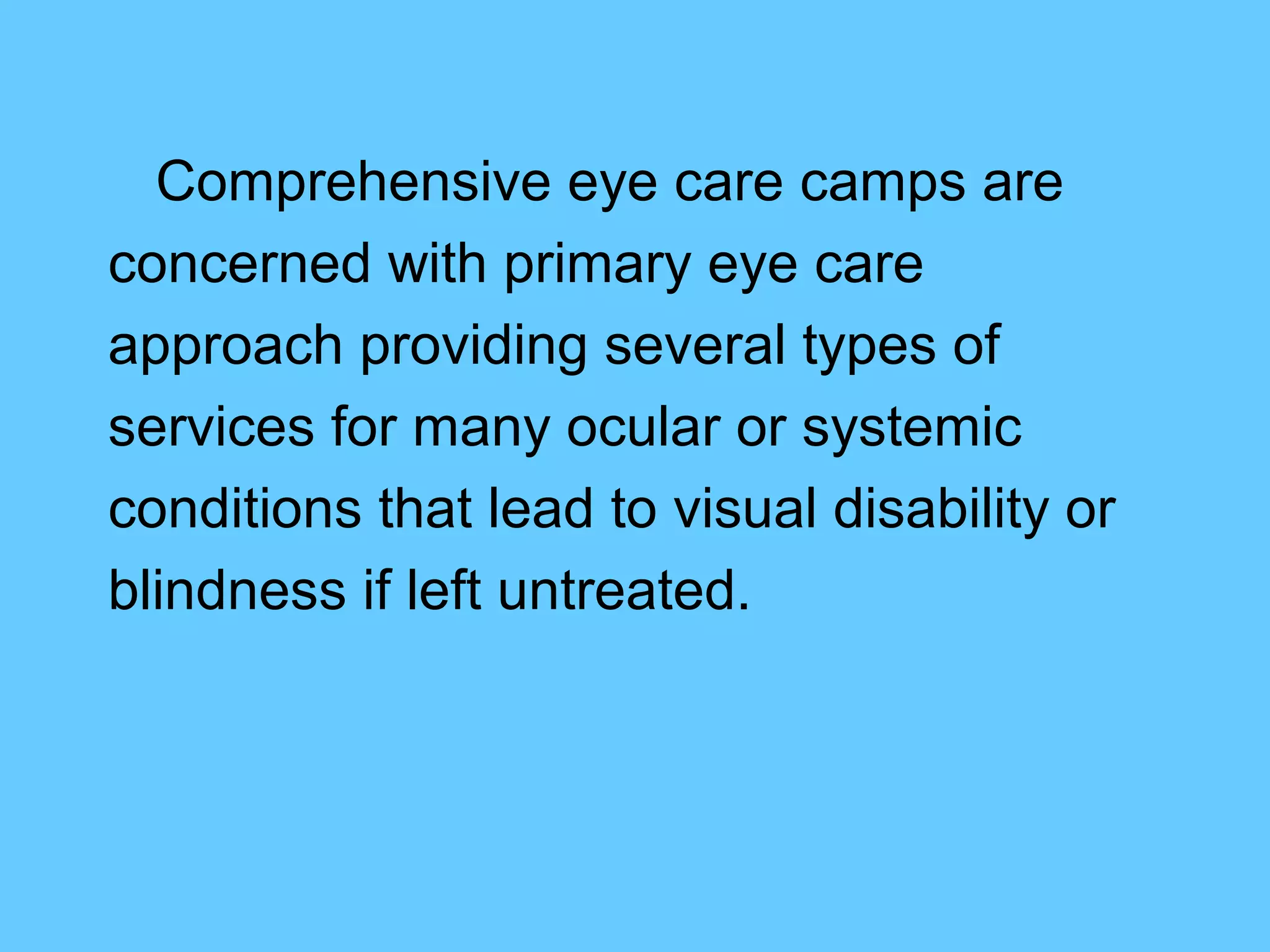1) Eye camps are organized by NGOs and provide eye care services to remote areas, with two main types being comprehensive camps and cataract-only camps.
2) Comprehensive camps identify and treat various eye conditions while cataract camps focus solely on cataract surgery.
3) Monitoring camp activities through indicators like number of patients examined and treated helps evaluate effectiveness and allows organizers to improve services.





























